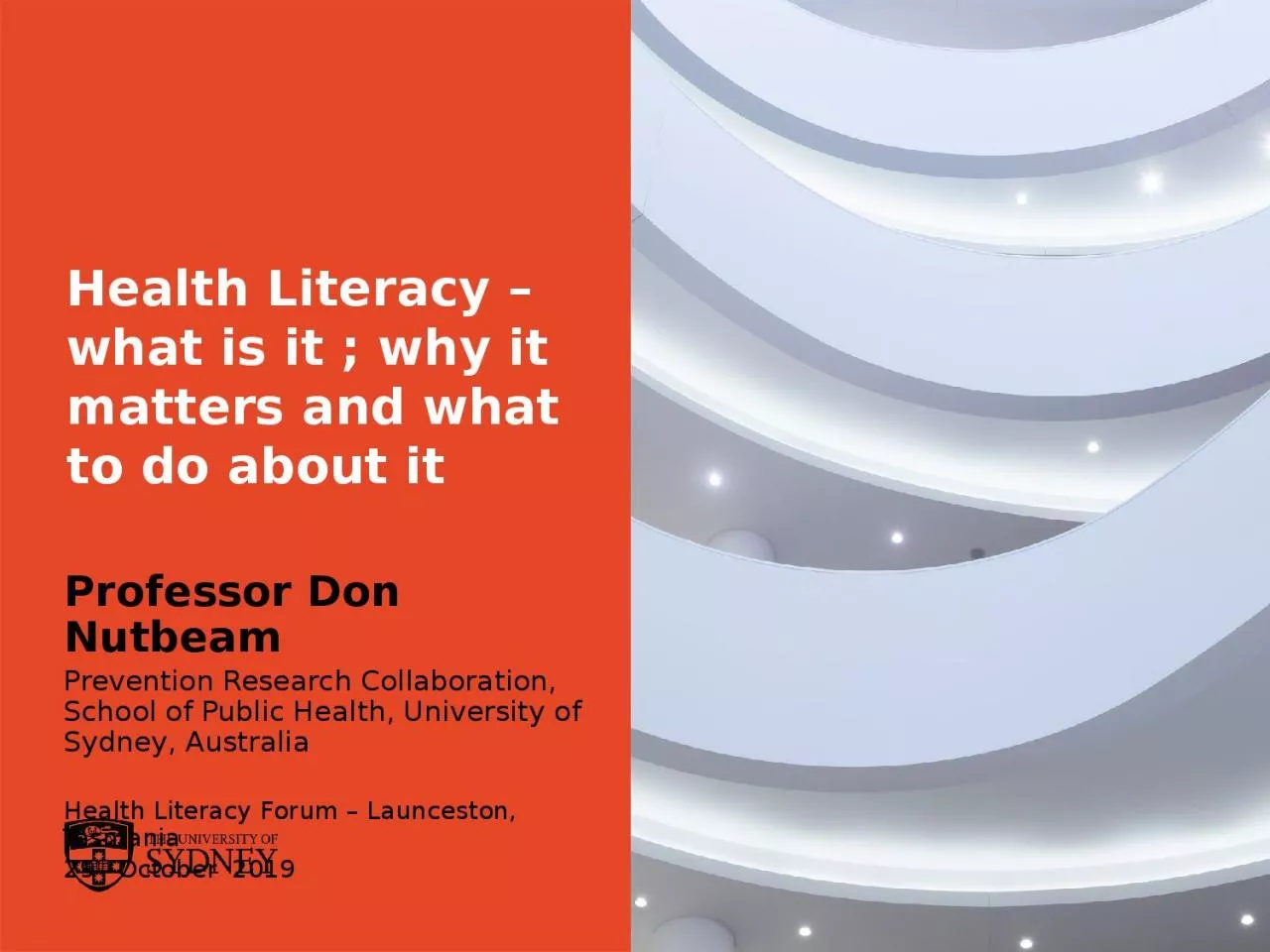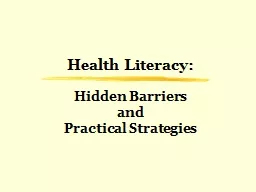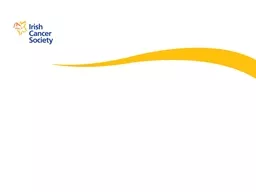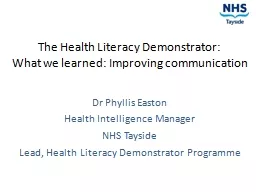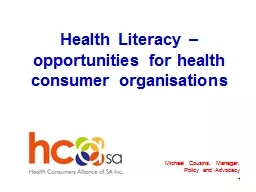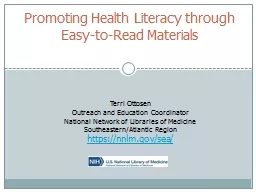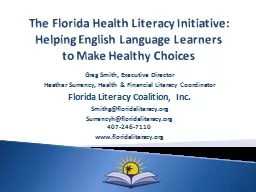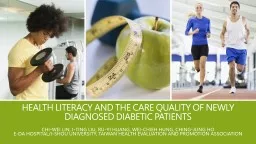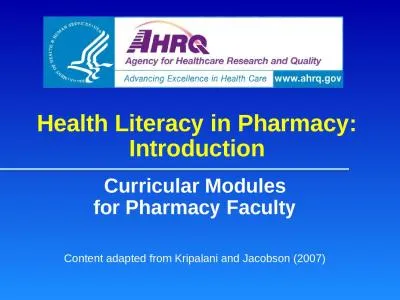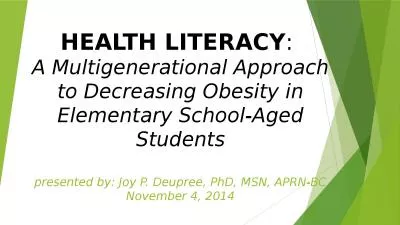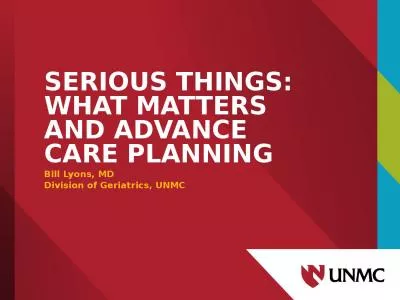PPT-Health Literacy – what is it ; why it matters and what to do about it
Author : deborah | Published Date : 2023-12-30
Professor Don Nutbeam Prevention Research Collaboration School of Public Health University of Sydney Australia Health Literacy Forum Launceston Tasmania 29 th
Presentation Embed Code
Download Presentation
Download Presentation The PPT/PDF document "Health Literacy – what is it ; why it ..." is the property of its rightful owner. Permission is granted to download and print the materials on this website for personal, non-commercial use only, and to display it on your personal computer provided you do not modify the materials and that you retain all copyright notices contained in the materials. By downloading content from our website, you accept the terms of this agreement.
Health Literacy – what is it ; why it matters and what to do about it: Transcript
Download Rules Of Document
"Health Literacy – what is it ; why it matters and what to do about it"The content belongs to its owner. You may download and print it for personal use, without modification, and keep all copyright notices. By downloading, you agree to these terms.
Related Documents

